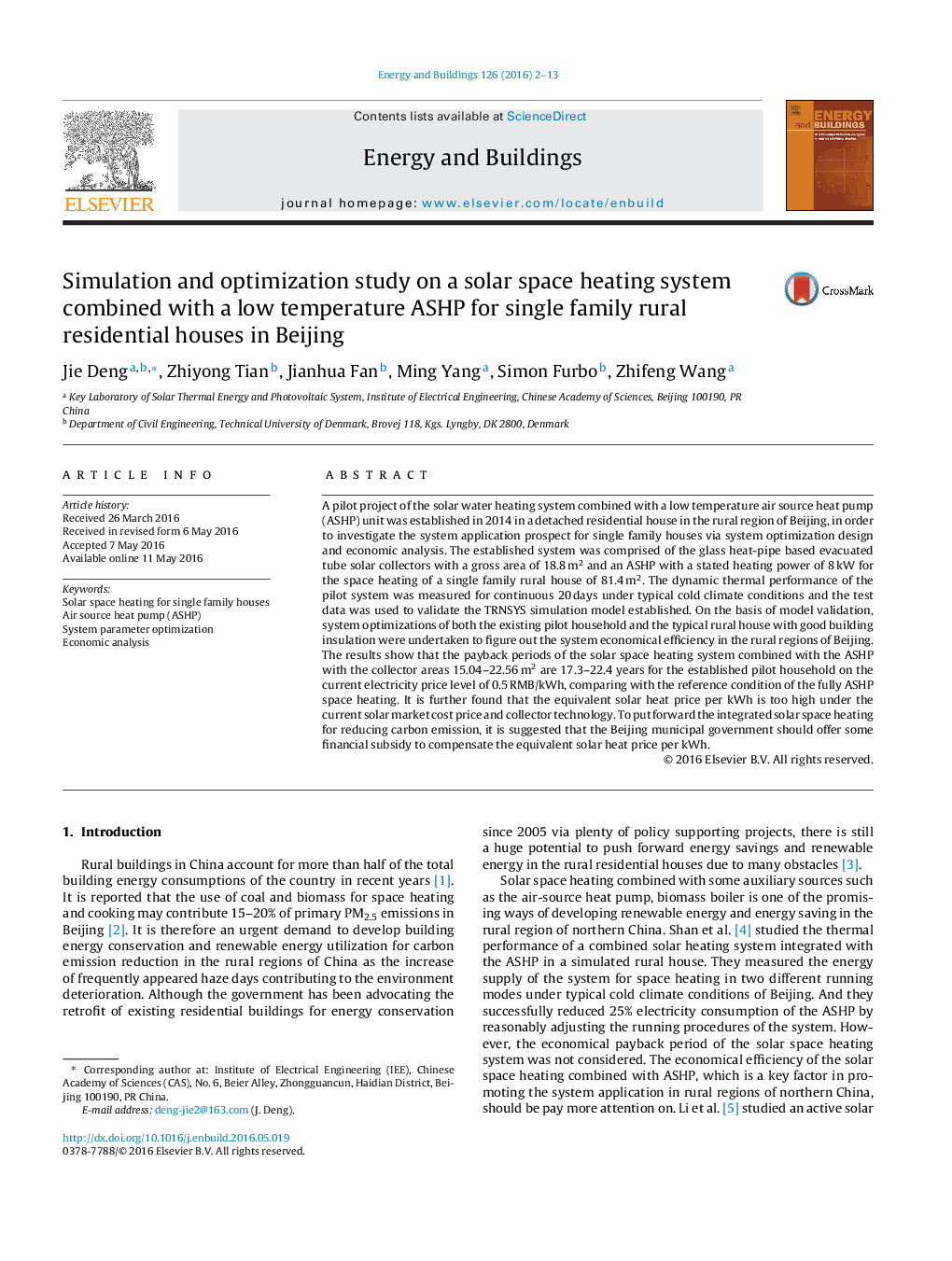| Article ID | Journal | Published Year | Pages | File Type |
|---|---|---|---|---|
| 261910 | Energy and Buildings | 2016 | 12 Pages |
•Field tests of a solar space heating system for a pilot household were conducted.•TRNSYS based model of the house space heating system was established and validated.•Optimization analysis of the space heating system was done by simulation.•Economical efficiency of the solar heating system depends on equivalent heat price.
A pilot project of the solar water heating system combined with a low temperature air source heat pump (ASHP) unit was established in 2014 in a detached residential house in the rural region of Beijing, in order to investigate the system application prospect for single family houses via system optimization design and economic analysis. The established system was comprised of the glass heat-pipe based evacuated tube solar collectors with a gross area of 18.8 m2 and an ASHP with a stated heating power of 8 kW for the space heating of a single family rural house of 81.4 m2. The dynamic thermal performance of the pilot system was measured for continuous 20 days under typical cold climate conditions and the test data was used to validate the TRNSYS simulation model established. On the basis of model validation, system optimizations of both the existing pilot household and the typical rural house with good building insulation were undertaken to figure out the system economical efficiency in the rural regions of Beijing. The results show that the payback periods of the solar space heating system combined with the ASHP with the collector areas 15.04–22.56 m2 are 17.3–22.4 years for the established pilot household on the current electricity price level of 0.5 RMB/kWh, comparing with the reference condition of the fully ASHP space heating. It is further found that the equivalent solar heat price per kWh is too high under the current solar market cost price and collector technology. To put forward the integrated solar space heating for reducing carbon emission, it is suggested that the Beijing municipal government should offer some financial subsidy to compensate the equivalent solar heat price per kWh.
